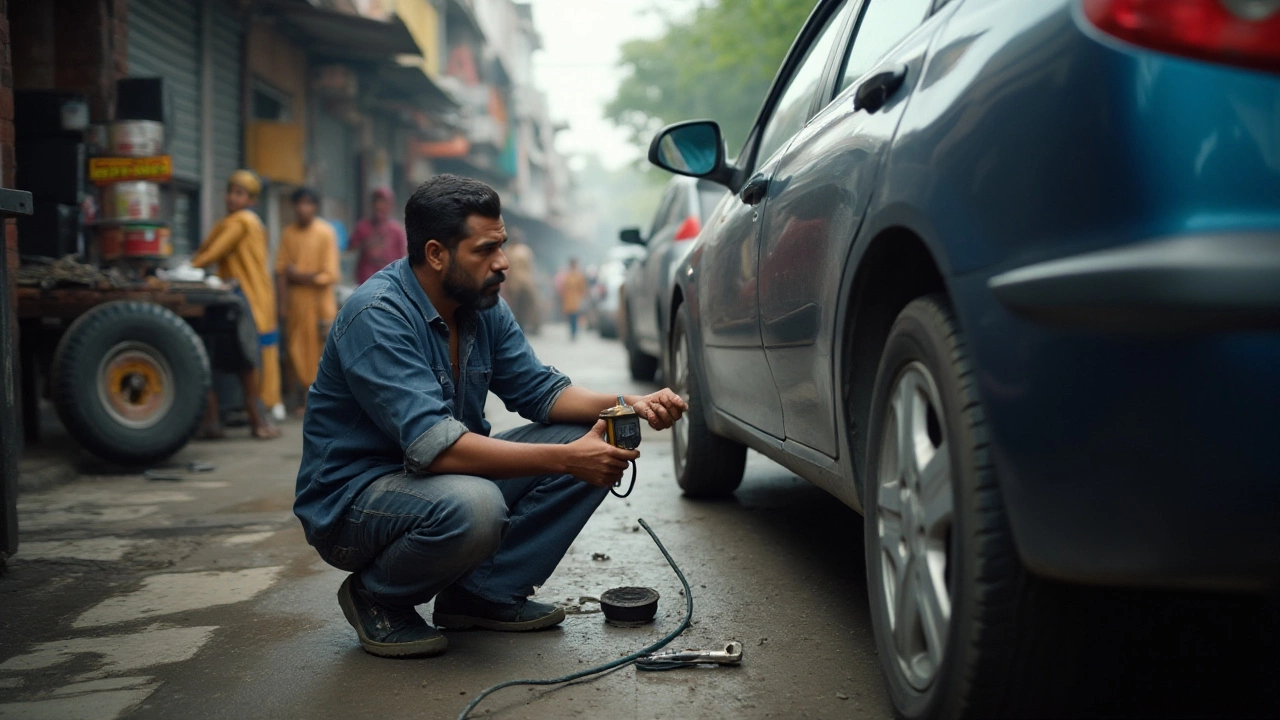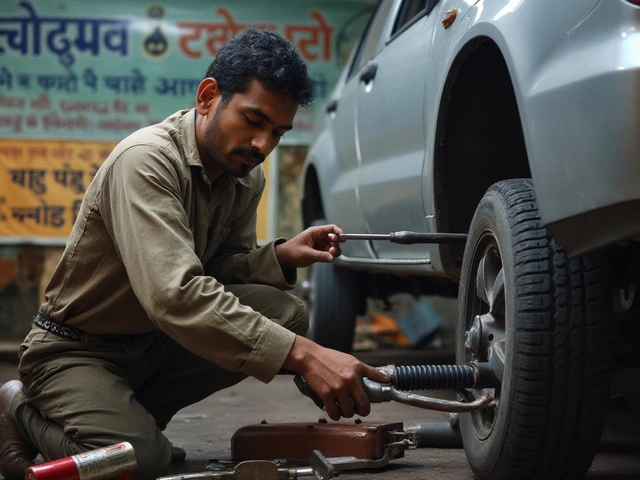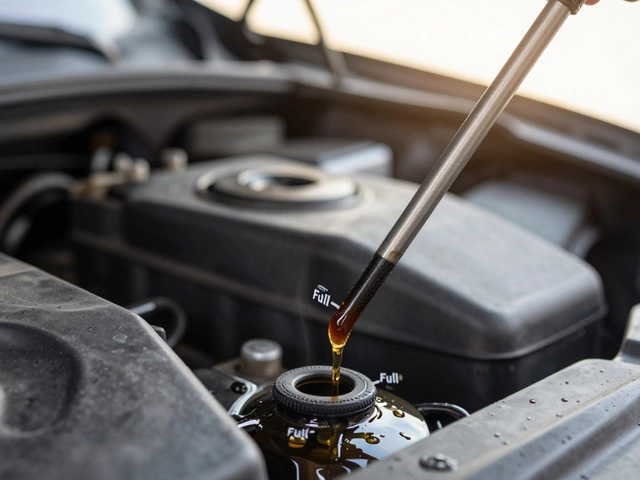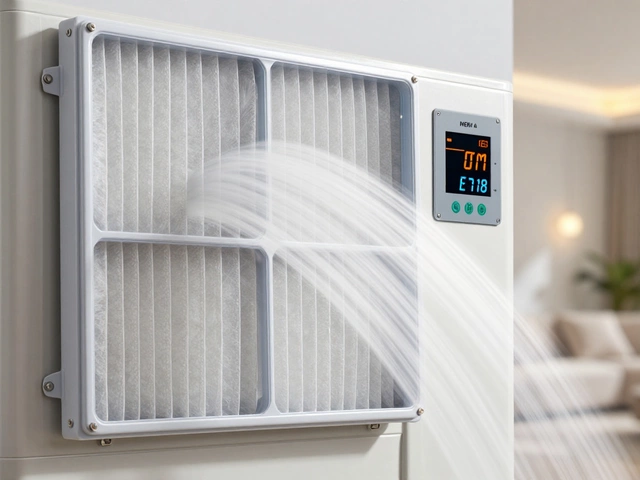
At some point in your driving journey, you'll find yourself asking the age-old question: how long should my car tires really last? It's a topic that piques the curiosity of many vehicle owners and for a good reason. Knowing the lifespan of tires not only influences your budget but also has implications for your safety on the road.
There are various elements at play when it comes to determining how long those rubber companions of yours will endure. From the surfaces you drive on to the manner in which you handle your vehicle, each choice you make impacts their longevity. In this exploration, we'll dive into these factors and offer practical tips to ensure you maximize your tire investment.
- Factors Affecting Tire Longevity
- Signs of Tire Wear
- Tips for Prolonging Tire Life
- When to Replace Your Tires
Factors Affecting Tire Longevity
When you think about the longevity of your car tires, it becomes clear that not all tires are created equal, nor do they wear out the same way. A myriad of factors play into how long you can expect them to last. One of the primary influencers is the type of tire itself. Summer, winter, all-season, and performance tires each have their unique designs and rubber compounds intended for specific conditions, which directly affect their durability. For instance, summer tires offer excellent grip in warm conditions but may wear out faster when exposed to harsher temperatures.
Another critical factor is your driving habits. If you're the kind of driver who enjoys abrupt starts, sudden stops, or spirited cornering, expect your tires to wear out faster than those driven more conservatively. Such habits increase friction and heat, accelerating the wear process. On the other hand, maintaining steady speeds and following a smooth driving style can considerably prolong the life of your tires. It's like how a gourmet chef treats their knives—careful, skilled use keeps them sharper longer.
The roads you drive on also tell a tale of tire wear. Well-paved highways can offer a longer tire lifespan compared to gravel roads or those littered with potholes. Uneven terrain and rough surfaces can lead to increased stress on the tires and cause irregular wear patterns. Additionally, frequently driving on salted roads, typical in areas with heavy winter snowfall, can lead to chemical wear on some tire components.
As with anything mechanical, diligent maintenance plays a vital role. Regular tire rotations, typically recommended every 5,000 to 8,000 miles, ensure even wear by changing the position of your tires. Keeping your tires balanced and aligned also prevents premature tire wear. It's advised to check air pressure monthly, as under-inflated tires can generate more heat and become susceptible to quick wear, while over-inflation can lead to reduced traction and uneven tread wear.
"Tire maintenance isn't just an automotive afterthought; it’s a critical part of vehicle safety and efficiency," says Steve Gillman, an automotive expert from the Tire Association. His sentiment underscores the importance of keeping an eye on those often neglected rubber companions. After all, the more care you give them, the more miles you’ll enjoy with them.Your attention can also lead to spotting small issues before they turn into costly repairs. Even the tiniest valve leak or rim damage can lead to a gradual loss of air pressure, which compounds wear and fuel wastage. Remember, keeping those tire treads clean by washing them regularly rids them of gravel, stones or debris.
Interestingly, a U.S. survey suggests that drivers who consistently follow proper tire care techniques can extend their tire life by an average of 25-30% compared to those who do not. This tidbit of knowledge serves as tangible evidence of how impactful good maintenance habits can be. Lastly, environmental elements have their role too. Extended exposure to sunlight, ozone, road chemicals and drastic temperature changes can deteriorate tire rubber over time, shortening its life. Those living in extreme climates may find their tire longevity considerably impacted by these elements.

Signs of Tire Wear
Recognizing the signs of tire wear is crucial to maintaining your car's performance and safety. One of the most obvious indicators is the tread depth. As tires wear out, the grooves that provide traction become shallower, diminishing your vehicle’s grip on the road. This can lead to longer stopping distances, especially in wet conditions. A quick test you can perform is the coin test. Take a coin and insert it into the tread; if the top of the coin is visible, it might be time to consider new tires.
Another telling sign is the presence of cracks or bulges in the sidewall. These structural issues can be warning signs of a weak or damaged tire that might lead to a blowout if not tended to promptly. Not all wear is visible, though. Your car might start feeling different to handle. If you notice unusual vibrations or if steering feels off, it could be a sign that one or more tires are struggling. It's an indication that the tires might be unevenly worn, which often happens due to improper inflation or alignment issues.
Tire wear can manifest through noise, too. An increase in road noise or a distinct humming sound usually points to uneven tread wear. This happens when tires wear at different rates, often caused by poor alignment. Also, be on the lookout for cupping, which means there are uneven patches around the tire, making them throb audibly at certain speeds. Listening to your tires can provide as much information as seeing them can.
"Tires are the feet of your car. Just as we feel discomfort with bad shoes, our cars become compromised on worn tires," says John Smith, a renowned tire safety expert.
Another indirect sign of tire wear is a drop in fuel efficiency. Your car’s tires are the only point of contact with the road, and if they’re not functioning optimally, it can increase the rolling resistance substantially. This forces the engine to work harder, which translates to increased fuel consumption. Monitoring fuel efficiency might seem tedious, but it'll highlight abnormalities tied not just to the engine but to your tires as well.
| Tire Condition | Potential Issue |
|---|---|
| Worn down tread | Reduced grip |
| Cracks or bulges | Risk of blowout |
| Uneven wear pattern | Poor alignment |
| Increased road noise | Uneven tread wear |
| Decreased fuel efficiency | Higher rolling resistance |
Regular checks can alert you to these signs early on, saving you from unexpected expenses or an unfortunate incident due to tire failure. Tire wear isn’t just something to think about when it’s time for an MOT. It's part of our responsibility as drivers to keep an eye on our car’s 'feet' to ensure every journey is as smooth and safe as possible. It's these small changes and signs that we might overlook, yet they hold the key to a safer driving experience.

Tips for Prolonging Tire Life
When it comes to getting the most out of your car tires, maintenance is king. It all starts with keeping your tires properly inflated. You might be surprised to learn that under-inflated tires are a primary cause of excessive wear, which can significantly reduce tire longevity. Ensuring that they are inflated to the manufacturer’s recommended pressure not only enhances their lifespan but improves fuel efficiency and handling. So, make it a habit to check your tires’ pressure at least once a month. Don't forget that temperature changes can also affect pressure, with cold weather causing it to drop. Investing in a reliable pressure gauge is a small price to pay for the potential savings in avoided tire replacements.
Rotating your tires regularly is another essential practice that many drivers overlook. Tires wear unevenly depending on their position on the vehicle and the type of vehicle you drive. By rotating them about every 5,000 to 8,000 miles, you can ensure more uniform wear and extend their overall life. If you're unsure about the rotation pattern, consult your vehicle's manual or ask your tire specialist. Alongside rotation, consistent wheel alignment is crucial. Misalignment can cause tires to wear unevenly and prematurely, affecting your car's performance and safety on the road.
Another critical element to consider in tire care is your driving style. Aggressive driving, like swift acceleration, hard braking, and fast cornering, can lead to quick and uneven tire wear. Embracing smooth, steady driving habits can contribute to your tires' longevity. Understandably, busy schedules can lead to impatience on the road, but making a conscious effort to drive more smoothly not only benefits your tires but can also reduce stress and improve fuel economy. For those who often find themselves on rugged terrains or harsh conditions, choosing tires specifically designed for such environments can also expand their life substantially.
It's also worth noting the impact of seasonal changes on tire wear. Using season-specific tires—such as winter tires in cold, icy conditions—can prevent unnecessary wear and tear. But remember, switching back to summer or all-season tires when temperatures rise is just as crucial to avoid the excessive wear that winter tires endure on warm roads. Adequate storage of your seasonal tires is another step to prolonging their integrity; keeping them in a cool, dry place and away from big shifts in temperature is recommended. To wrap it up, proper tire care involves a series of mindful practices that, when collectively implemented, can save both money and provide peace of mind on your journeys.

When to Replace Your Tires
Knowing when to replace your tires is crucial for maintaining safety and performance on the road. While many people rely on tread depth as the key indicator, several other factors should influence your decision. Ideally, you want to maximize your tires' lifespan without compromising safety. Despite their appearance, tires lose their integrity over time, making tire replacements inevitable at some point. Favorable road conditions and considerate driving habits can extend a tire's life; however, several key signs can help you determine when it's time for a change.
One of the most reliable indicators of tire wear is the tread depth. It's widely recommended that tires should be replaced when the tread drops below 1.6mm. However, wet conditions may necessitate higher tread depths for safety. To ensure consistent traction and reduce the risk of hydroplaning, many suggest replacing your tires once the tread reaches 3mm. Consider performing the penny test—insert a penny into your tire's tread with Lincoln's head down. If you can see all of Lincoln's head, your tread is too worn, and it's time to shop for new tires.
Age is another critical factor. Even if your tread depth appears acceptable, tires should generally be replaced every six to ten years. Over time, the rubber deteriorates and loses elasticity, leading to potential blowouts or tread separations. To determine your tire's age, you can check the DOT code on the sidewall, which indicates the week and year of manufacture. For example, a code indicating '1018' would reveal that the tire was made in the 10th week of 2018.
External Damage and Wear Patterns
Apart from age and tread, external damage is a clear sign to replace your tires. Punctures, cracks, or bulges signify weakened structures that can lead to sudden failures. Weather and road conditions, combined with driving habits, might cause inconsistent wear patterns. Uneven tread wear is often a sign of improper alignment or tire inflation, which not only shortens the lifespan of your tires but also affects vehicle handling.
"By maintaining proper inflation and performing regular rotations, one can extend the lifespan of their tires," advises the National Highway Traffic Safety Administration.
Remember, your tires are the only point of contact between your vehicle and the road. Regular inspections, both visual and tactile, can help catch signs of wear early. Be sure to consult a professional if you're uncertain; they can offer expert opinions and advice to help you achieve both safety and longevity for your tires.
Tire technology has advanced, and with it, the ability to monitor tire health more intelligently. Innovations in tire pressure monitoring systems (TPMS) provide alerts for pressure discrepancies, helping prevent premature wear. Leveraging this technology, alongside skilled inspection techniques, ensures you maintain road safety. When the timing aligns with these indicators, replacing those trusty tires becomes a sound investment for every journey.





